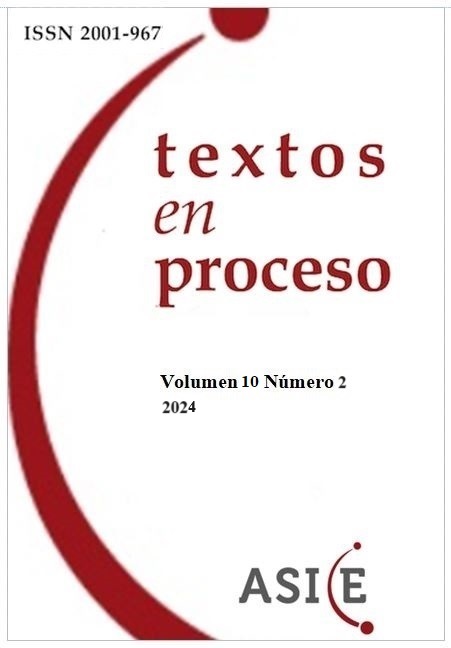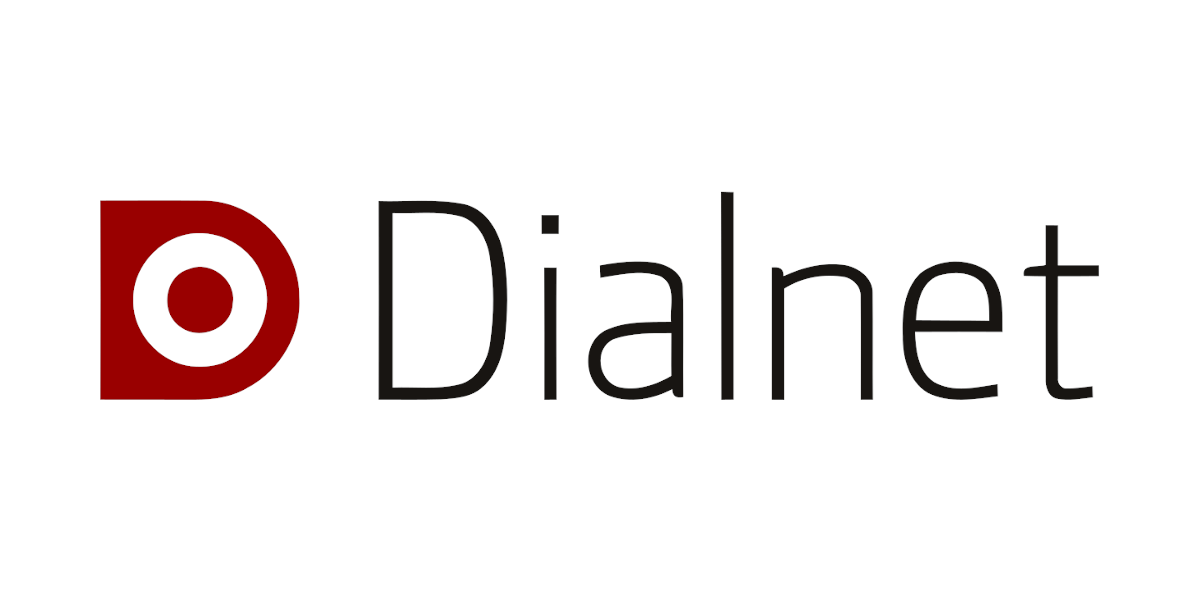Text, voice messages, emoji, sticker? Mode choice in WhatsApp interactions
Abstract
From a pragmatic sociocultural perspective, this work studies an aspect that is still underdeveloped in the field of Digital Discourse Analysis: how speakers perceive the change of mode in the messages exchanged in WhatsApp conversations, more specifically, the transition from text to audio or image. To address this objective, we combine three phases in our methodological approach. First, we analyse the comments circulating in internet as memes about the change of mode. Second, we detect situations of mode change in CoDICE corpus. From these two exploratory steps, we designed a social habits test to identify the sociocultural premises underlying these choices. The instrument was applied to a universe made up of 74 WhatsApp users between 19 and 70 years old, Spanish speakers from Argentina and Spain. The results indicate that speakers combine the forms of communication (written text, audio messages, emojis or other images) for strategic purposes. Likewise, the selection of one or the other modality and, more specifically, the passage from one to the other during an exchange entails social meanings whose effects are projected on the management of the communicative links of the participants.
Downloads
References
Alcántara Plá, M. (2014). Las unidades discursivas en los mensajes instantáneos de wasap. Estudios de Lingüística del Español, 35, pp. 223–242. https://doi.org/10.36950/elies.2014.35.8716
Androutsopoulos, J. (2014). Computer-mediated Communication and Linguistic Landscapes. En Holmes, J. y Hazen, K. (Eds.) Research Methods in Sociolinguistics: A Practical Guide (pp. 75–90). New York, NY: John Wiley & Sons. https://doi.org/10.1002/9781394260867.ch5
Androutsopoulos, J. (2021). Polymedia in interaction. Pragmatics and Society, 12(5), pp. 707–724. https://doi.org/10.1075/ps.21069.int
Benítez-Eyzaguirre, L., de-Marcos, C., y Acosta-Calderón, L. (2023). La hiperconversación, el diálogo aumentado del mundo móvil a través de WhatsApp. Revista Mediterránea de Comunicación: Mediterranean Journal of Communication, 14(1), pp. 279–294. https://doi.org/10.14198/MEDCOM.23272
Blommaert, J. (2021). Comprender la sociedad a través del lenguaje: una nueva mirada sobre los grupos sociales y la integración (Trad. L. Eisner, trabajo original publicado en 2017). Enunciación, 26, pp. 37–54. Doi: https://doi.org/10.14483/22486798.16908
Blommaert, J., y Backus, A. (2013). Superdiverse repertoires and the individual. En de Saint-Georges, I. y Weber, J. (Eds.), Multilingualism and multimodality: current challenges for educational studies (pp. 11–32). Rotterdam: Sense. https://doi.org/10.1007/978-94-6209-266-2_2
Bravo, D. (2009). Pragmática, Sociopragmática y Pragmática sociocultural del discurso de la cortesía. Una introducción. En Bravo, D., Hernández Flores, N. y Cordisco, A. (Eds.), Aportes pragmáticos, sociopragmáticos y socioculturales a los estudios de la cortesía en español (pp. 31–68). Buenos Aires: Dunken.
Bravo, D. (2020). Pragmática sociocultural para el análisis de los aspectos sociales del discurso. En Escandell-Vidal, M.ª V., Amenós Pons, J. y Ahern, A. K. (Eds.), Pragmática (pp. 481–497). Madrid: Akal.
Bravo, D. y Briz, A. (2004). Pragmática sociocultural: estudios sobre el discurso de cortesía en español. Barcelona: Ariel.
Cantamutto, L. (2018). Estrategias pragmáticas de la comunicación por SMS en español bonaerense. Tesis doctoral inédita. Universidad Nacional del Sur, Bahía Blanca.
Cantamutto, L. y Vela Delfa, C. (2019). Emojis frecuentes en las interacciones por whatsapp: Estudio comparativo entre dos variedades de español (Argentina y España). Círculo de lingüística aplicada a la comunicación, 77, pp. 171–186. https://doi.org/10.5209/CLAC.63282
Cantamutto, L. M. (2023). Estilo digital, lenguaje juvenil y gestión de vínculos: Del lenguaje SMS al modo sticker. Revista Argentina de Investigación Educativa, 3(5), pp. 199–225.
Emery, R. (2018). WhatsApp voice messaging as an emergent digital practice: a multi-method analysis. Cahiers du Centre de Linguistique et des Sciences du Langage, 55, pp. 135–157. https://doi.org/10.26034/la.cdclsl.2018.287
Goffman, E. (1979 [1971]). Relaciones en público: microestudios del orden público. Madrid: Alianza.
Goffman, E. (1981). Forms of talk. Philadelphia, PA: University of Pennsylvania Press.
Gumperz, J. J. y Hymes, D. (Eds.) (1972), Directions in sociolinguistics: The ethnography of communication. Nueva York: Rinehart and Winston
Gumperz, J. J. (1982). Discourse Strategies. Cambridge: Cambridge University Press. https://doi.org/10.1017/CBO9780511611834
Hernández-Flores, N. (2002). Los tests de hábitos sociales y su uso en el estudio de la cortesía: una introducción. En Bravo, D. (Ed.), Actas del Primer coloquio del programa EDICE “La perspectiva no etnocentrista de la cortesía: identidad sociocultural de las comunidades hispanohablantes” (pp. 186–197). Escocolmo: Universidad de Estocolmo/Programa EDICE.
Herring, S. C. y Ge-Stadnyk, J. (2024). Emoji and illocutionarity. Structures in Discourse. En Gill, M., Malmvirta, A. y Warvik, B. (Eds.) Interaction, adaptability, and pragmatic functions (pp. 124-155). Amsterdam: John Benjamins. https://doi.org/10.1075/pbns.345.07her
Holmes, H. y K. Hazen (eds.) Research Methods in Sociolinguistics: A Practical Guide (pp. 75–90). New York, NY: John Wiley & Sons.
Jewitt, C. (2013). Multimodal methods for researching digital technologies. En Price, S., Jewitt, C. y Brown, B. (Eds.), The Sage handbook of digital technology research (pp. 250–265). Los Angeles: Sage. https://doi.org/10.4135/9781446282229.n18
König, K. (2024). Transmodal messenger interaction–Analysing the sequentiality of text and audio postings in WhatsApp chats. Discourse, Context & Media, 62. Doi: https://doi.org/10.1016/j.dcm.2024.100818
Konrad, A., Herring, S. C., y Choi, D. (2020). Sticker and emoji use in Facebook Messenger: Implications for graphicon change. Journal of Computer-Mediated Communication, 25(3), pp. 217–235. https://doi.org/10.1093/jcmc/zmaa003
Kress, G. (2003). Literacy in the new media age. London: Routledge. https://doi.org/10.4324/9780203299234-8
Sampietro, A. (2019). Cómo hacer palabras con emojis: sustitución y enfatización visual de vocablos en WhatsApp. REDD: Revista de estudios del discurso digital, 2, pp. 1–33. https://doi.org/10.24197/redd.2.2019.1-33
Sampietro, A., y König, K. (2024). The medium is accountable: Metacommunication and media ideologies about voice messages in WhatsApp chats. Discourse & Communication, 18(1), pp. 51–71. https://doi.org/10.1177/17504813231187109
Scolari, C. A. (2004). Hacer clic. Hacia una sociosemiótica de las interacciones digitales. Barcelona: Gedisa.
Statista (2024). Most popular global mobile messenger apps as of April 2024, based on number of monthly active users. Recuperado de: https://www.statista.com/statistics/258749/most-popular-global-mobile-messenger-apps/.
Statista (2023). Share of mobile users worldwide who prefer text or audio messages. Recuperado de: https://www.statista.com/statistics/1459203/mobile-users-preference-text-or-audio-messages/#:~:text=According%20to%20a%20survey%20of%20global%20consumers%20conducted,in%2010%20respondents%20worldwide%20reported%20preferring%20audio%20messages.
Tannen, D. (1996). Género y discurso. Barcelona: Paidós.
Thurlow, C. (2017). Enmarcando el lenguaje Enmarcando el lenguaje de los nuevos medios En Giammatteo, M, Gubitosi, P. y Parini, A. (Eds), El español en la Red: usos y géneros de la comunicación mediada por computadora (pp. 27–37). Madrid / Frankfurt am Main: Iberoamericana / Vervuert. https://doi.org/10.31819/9783954877386-002
Van Leeuwen, T. (2015). Multimodality. En: Tanner, D., Hamilton, H. E., y Schiffrin, D. (Ed.), The Handbook of Discourse Analysis (pp. 447-465). Chichester, West Sussex: Wiley-Blackwell. https://doi.org/10.1002/9781118584194.ch21
Vela Delfa, C. (2007). El correo electrónico: el nacimiento de un nuevo género. Tesis Doctoral inédita. Universidad Complutense de Madrid.
Vela Delfa, C. (2020). Una aproximación semiótica al estudio de los emojis. Círculo de lingüística aplicada a la comunicación, 84, pp. 153–165. https://doi.org/10.5209/clac.69723
Vela, C. y Cantamutto, L. (2021). Los emojis en la interacción digital escrita. Madrid: Arco/Libros.
Verschueren, J. (2002). Para entender la pragmática. Madrid: Gredos.
Copyright (c) 2024 Lucía Cantamutto, Cristina Vela Delfa

This work is licensed under a Creative Commons Attribution 4.0 International License.
Texts in Process (TEP) is a non-commercial open-access scholarly journal governed by a Creative Commons Recognition 4.0 International license. It follows a full and unrestricted open access, without charges or fees for shipping, reviewing, processing and publishing articles. Users can read, download without registering, distribute, print or link the complete texts of numbers and articles, without the permission of the editors or authors. There is also no charge to publish (APCs), being applicable to the entire editorial process. The authors retain their intellectual rights at all times.
ASICE-EDICE Programme has always believed that non-commercial, open, unlimited and unrestricted access to specialized academic publications is a vehicle for academic freedom and scientific rigor. It adheres and shares the Declaration of Mexico and DORA to guarantee the protection of academic and scientific production in Open Access.

















